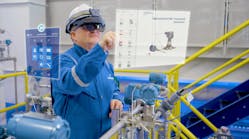Communication ensures safety and efficiency in plant operations and maintenance
A severe incident at the BP Texas City oil refinery in 2005 resulted in 15 deaths and 180 injuries, caused serious damage to the structure, created long-term environmental issues and resulted in millions of dollars lost to the company. The final review of the incident by regulatory authorities noted that poor shift-to-shift communication contributed significantly to the accident.
There have been several other catastrophic accidents in the years that have followed both in the United States and abroad, and it is likely that several could have been avoided had communications among operations and maintenance teams been more effective.
There is no question that these events have put pressure on processing plant operators to focus more heavily on the need for clear, concise communications among teams during shift handovers. While communication and collaboration are critical in the best of times, we have also been challenged by the impact of the COVID-19 pandemic. When face-to-face communication has been reduced and some functions have been moved from the plant to off-site locations, it has required creative solutions for remote interaction and information sharing among corporate, operations and maintenance teams.
The connection between safe operations and maintenance
In general, among the most critical situations for processing plants are when they are experiencing special operating conditions, such as when a maintenance repair activity is planned or performed, a recurring preventative maintenance activity is undertaken or when a product changeover is executed.
Maintenance situations are perhaps the most critical to safety in the operation of a processing plant. This makes robust and seamless communication a vital activity to ensure that all involved are informed and in sync with the processes and activities that are planned or occurring on a regular basis.
Plant process management ensures safe communications
One of the reasons that humans can achieve so much is our ability to share ideas, information and instructions. We use multiple methods of communication to allow us to collaborate with team members to break down silos so that all involved in operations and maintenance are equally participating with the same — and most updated — information.
Achieving this collaborative environment can be supported by a plant process management (PPM) system that ensures communication between shifts and breaks down the silos. In short, PPM helps manage, monitor and optimize processing plants in addition to work activities, operations and production assets. It gives a real-time view of work progress and tracks the status of any incidents or outliers to routine operations.
This approach provides a clear path to keeping everyone on the same page. PPM systems allow interlinks between shift reports and maintenance requests. For example, recognized problems on operations shifts can be seamlessly communicated to the maintenance team. Technically, PPM systems have an interface with maintenance Management systems such as SAP PM or IBM Maximo. This allows bi-directional communication, which ensures the shift team knows, for example, about the status of a repair request in the maintenance management system.
PPM delivers on the requirements for all plant operations, regardless of the use of automation, IoT instrumentation, machine learning (ML) or predictive maintenance. Knowledge can be gained from any human contact point in a process. Consistent capture of team-to-team communication is critical, especially with changing work patterns due to working remotely or social distancing. For example, COVID-19 has put a strain on conducting safe operations — but fortunately PPM is one solution that can safeguard manufacturers and further optimize their operations.
Special operating conditions are captured and preparation is executed
Created accurately, the information shared during the shift handovers represents a valuable foundation. It serves as a running protocol of relevant events and conditions that together describe the state of a manufacturing process within a specific period of time. This protocol is actionable and accessible for all managers, engineers and scientists working remotely.
Within process manufacturing organizations, there are staff with distinct roles, such as board operators in the control room, outside operators moving about the different production areas, mechanical and chemical process engineers, and the like. Each are accountable for specific roles and responsibilities. They are supervised by a senior team comprised of health, safety and environment experts, as well as operational excellence and continuous improvement. All involved have a need to communicate the routine as well as complex issues to identify root causes and eliminate them with new procedures executed consistently by all teams in a 24/7 environment.
As the shift handover is a critical moment a 24/7 operation, it must be conducted in a safe way to increase safety and ensure that maintenance activities can be performed efficiently. Imagine that planned maintenance activities on a Monday morning require certain conditions of an asset, like a cool-down process lasting over several hours. This activity must be started by the Sunday night shift to not hinder the progress of the maintenance team, or impact maintenance, if conducted by external contractors.
Any activities supporting comprehensive preparation and communication will also be financially beneficial, reducing friction between teams and finally increasing the focus on safe operations by all personnel.
How PPM can benefit predictive operations
In general, it is the human context from operators that is important to understand certain conditions affecting operations. The knowledge captured by the people directly involved in the process at intervals such as shift handover or inspection routines provides further insights about the plant’s operating condition. This is especially necessary for conditions that might not be available as sensor data, or involving safety or quality issues, for example.
Consider a processing plant where most of the process parameters are tracked within discrete time-series, usually by a historian. But a process engineer, looking only at the data and trends, has a hard time finding the reason for a deviation in the trends without considering the shift log. The trend can sometimes be easily explained with knowledge about a particular activity executed some hours before. For example, perhaps the feedstock to a process has changed due to raw material from a new vendor. Experienced process engineers could eventually find their way through that information, but it is an exercise that could take days and many conversations.
However, if that trend information is available right at the operator's fingertips, it increases the likelihood of finding root causes faster to resolve the process upsets more quickly.
Also, beyond humans reading this content, the availability of machine-readable context to sensor data enables predictive maintenance algorithms to consider this data for forecasts and artificial intelligence-based assistant and warning systems.
Empowering workers and increasing overall team performance
Manufacturers have embraced digital technologies that are making operations more efficient, such as sensors that can record vast amounts of data and information, but the human factor is still critically important. Embracing new technologies at all levels can be a challenge to workers with varying levels of experience, especially if large amounts of data need to be interpreted at the start of a shift without accurately transferring the overall picture of a previous shift. Shift-to-shift communications software enables the sharing of this digital information, but it needs to be intuitive and easy to use in order to promote user acceptance across all teams involved in the process.
Workers must be empowered with the knowledge to utilize these new systems, which means that they must be designed to help people and teams to easily work together more collaboratively.
A single digital platform provides the most updated information on manufacturing processes and procedures. This not only leads to improved productivity but also elevates increased safety. No guesswork is involved, and no searching is necessary to find the correct answer. Simply, it is like one conversation is had by many — resulting in a single source of truth for plant procedures and process optimization.
Connecting workers and technology creates safety and efficiency
In summary, a PPM system will deliver the foundation necessary to create an environment that elevates collaboration and communication among all team members and will help process manufacturers manage, monitor and optimize plants, including work activities as well as operations and production assets.
PPM delivers on the requirements for all plant operations, regardless of the level of their automation, internet of things (IoT) instrumentation, machine learning (ML) or predictive maintenance. Knowledge can be pulled for analysis from any human contact point in a process.
While it seems that the COVID-19 pandemic is currently on the wane and less remote working will be required, the learnings of the past year-plus will resonate for a long time, and much of that knowledge base will last forever. With empowered and connected teams, process-driven information sharing will ensure safe and efficient operations.
Andreas Eschbach is the founder and CEO of the software company eschbach, which helps production teams stay safe and work smarter through better information sharing and collaboration. Holding a degree in computer science, he draws his practical experience from leading a variety of international software consulting and implementation projects for leading chemical manufacturing companies, focusing on production, continuous improvement, EHS and maintenance. His company is a provider of manufacturing solutions and headquartered in southern Germany with offices in Boston, Massachusetts.
eschbach


